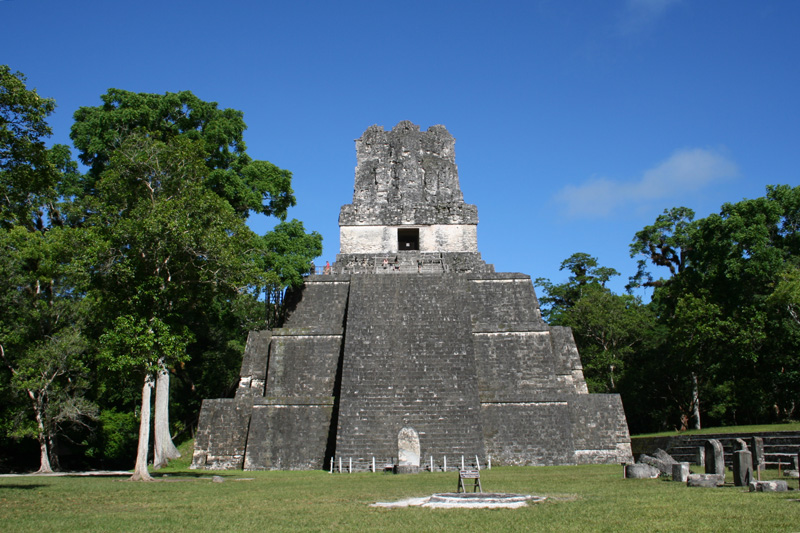Source: WTL© digital photograph of Temple II taken in the morning on site at Tikal in 2008.
Comments: This is one of Tikal's two most famous pyramids. It is called the Temple of the Masks. Since cardinal point orientation is so important to Mayan cosmology, architecture, city planning, mythology, and the like, it is worth noting that the photographer is looking due west at Temple II (built ca. 750) with his back to Temple I, which is the newer of the two temples; therefore, Temple II is facing east while Temple I is facing west. Note that the ancient stairway is in the middle (there's a new wooden stairway seen on the left) and that all but the extreme top (roof comb) has been restored. It is possible that Tikal's great ruler Hasaw Chan K'awil (682-721), built Temple I to honor his wife, Lady Twelve Macaw. This pyramid is about 120 feet high. (See Tikal page 11, for more about Temple I: => Tikal #11.)
In Mayan cosmology there is no heaven and hell per se. Instead there is the upper world with thirteen levels, the middle world of one level, and the underworld with nine levels. According, again, to Mayan cosmology (and botany and mythic geography), the Ceiba tree grows through all three worlds, from the highest level of the upper world to the lowest level of the underworld. Furthermore, in this geographico-cosmology, the Ceiba tree is the center of all four cardinal points. (See the Ceiba tree in: => Tikal #5b.)
Note even more, that, to the Mayas the east pointed toward the sunrise and, hence, life and rebirth; whereas the west pointed toward death.
Humanities questions: (A) What is the upright stone
in front of this pyramid? (B) Where is the actual religious temple in this scene? (C) Assuming, as stated above, that Temple I and Temple II are somehow related to Hasaw Chan K'awil and Lady Twelve Macaw, what significance may be found in the fact that Temple II looks east, while Temple I looks west?


